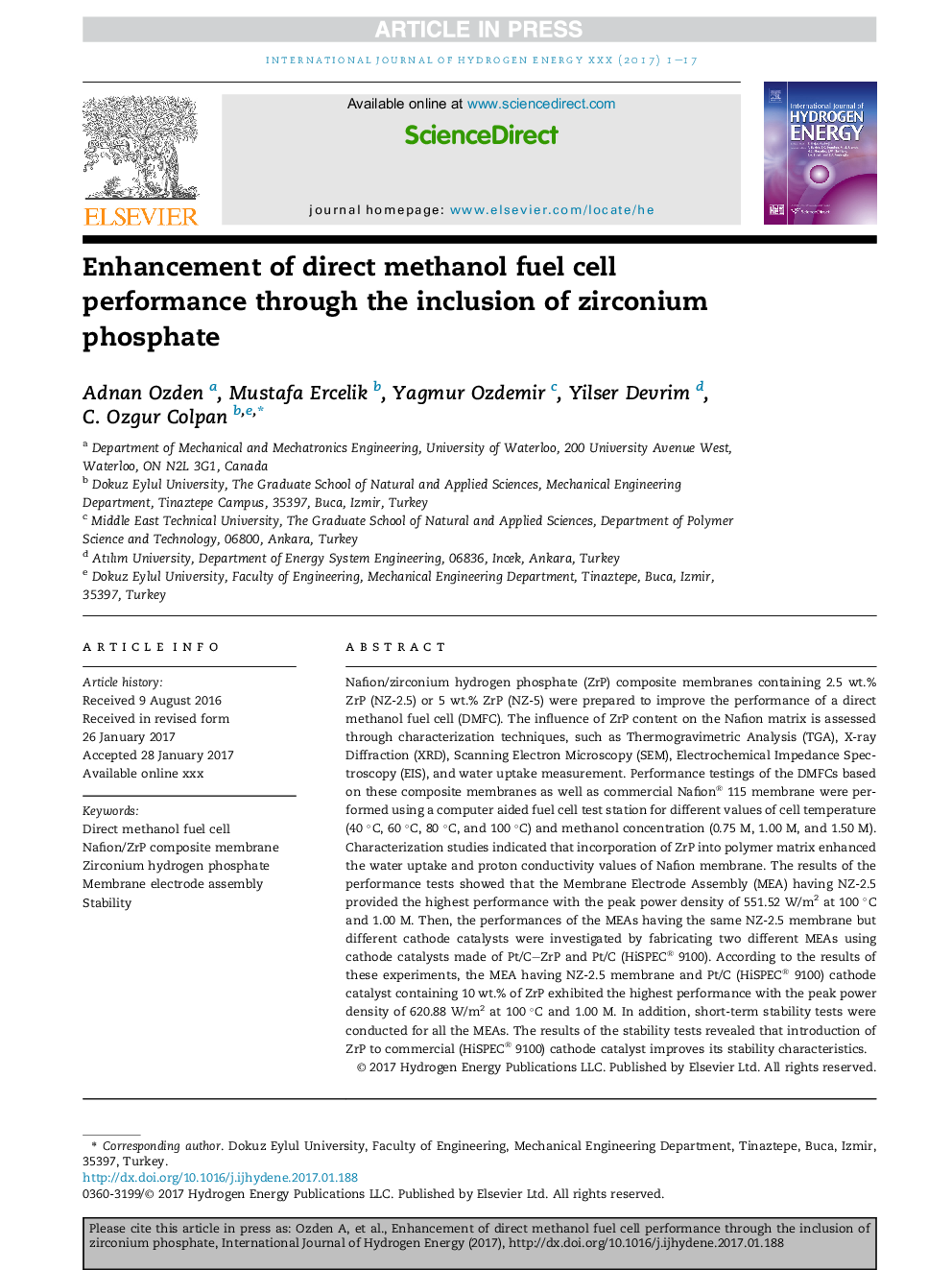| Article ID | Journal | Published Year | Pages | File Type |
|---|---|---|---|---|
| 5146004 | International Journal of Hydrogen Energy | 2017 | 17 Pages |
Abstract
Nafion/zirconium hydrogen phosphate (ZrP) composite membranes containing 2.5 wt.% ZrP (NZ-2.5) or 5 wt.% ZrP (NZ-5) were prepared to improve the performance of a direct methanol fuel cell (DMFC). The influence of ZrP content on the Nafion matrix is assessed through characterization techniques, such as Thermogravimetric Analysis (TGA), X-ray Diffraction (XRD), Scanning Electron Microscopy (SEM), Electrochemical Impedance Spectroscopy (EIS), and water uptake measurement. Performance testings of the DMFCs based on these composite membranes as well as commercial Nafion® 115 membrane were performed using a computer aided fuel cell test station for different values of cell temperature (40 °C, 60 °C, 80 °C, and 100 °C) and methanol concentration (0.75 M, 1.00 M, and 1.50 M). Characterization studies indicated that incorporation of ZrP into polymer matrix enhanced the water uptake and proton conductivity values of Nafion membrane. The results of the performance tests showed that the Membrane Electrode Assembly (MEA) having NZ-2.5 provided the highest performance with the peak power density of 551.52 W/m2 at 100 °C and 1.00 M. Then, the performances of the MEAs having the same NZ-2.5 membrane but different cathode catalysts were investigated by fabricating two different MEAs using cathode catalysts made of Pt/C-ZrP and Pt/C (HiSPEC® 9100). According to the results of these experiments, the MEA having NZ-2.5 membrane and Pt/C (HiSPEC® 9100) cathode catalyst containing 10 wt.% of ZrP exhibited the highest performance with the peak power density of 620.88 W/m2 at 100 °C and 1.00 M. In addition, short-term stability tests were conducted for all the MEAs. The results of the stability tests revealed that introduction of ZrP to commercial (HiSPEC® 9100) cathode catalyst improves its stability characteristics.
Related Topics
Physical Sciences and Engineering
Chemistry
Electrochemistry
Authors
Adnan Ozden, Mustafa Ercelik, Yagmur Ozdemir, Yilser Devrim, C. Ozgur Colpan,
